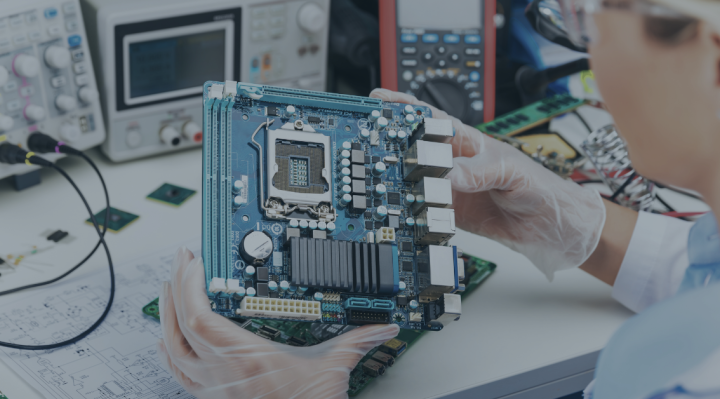The increasing pace of technological progress and the resulting shorter lifespan of electronic components mean that product lifecycle and component obsolescence management are not only becoming an integral part of the electronics manufacturing and assembly service sector. They are also a key factor responsible for the long-term success of EMS providers and their clients.
Electronics ageing due to physicochemical phenomena
The ageing of electronic components is a gradual process involving the degeneration or changing of their physical, electrical or mechanical properties. This process may result in deteriorating performance, the loss of initial parameters, errors and even malfunctions.
Components may age due to a variety of factors, including temperature and environmental conditions, material fatigue, corrosion, soldered connection degeneration as well as natural, though not always desired, changes in an electronic component’s parameters that occur during use and over time.
Electronics obsolescence from the business and market perspective
From the business and market perspective, the obsolescence of electronic components is a result of technological progress, changes in production processes and component availability. One of the principal challenges in this regard is the limited availability of electronic components on the market. Manufacturers simply stop producing older models, which means that they become more difficult to obtain. This may lead to production delays, problems with servicing and the need to undertake such management and engineering steps as:
Risk management and obsolescence forecasting: EMS providers and their clients need to implement strategies that forecast the risk of electronic component obsolescence in order to avoid costly periods of downtime and maintain a competitive edge.
Product lifecycle management: electronics obsolescence is very relevant to product lifecycle management. EMS providers and their clients need to monitor component availability throughout their product’s entire lifecycle.
Updates: obsolescence often means that it is necessary to introduce updates and upgrades. Companies need to be ready to adapt to changing technologies and client expectations, which may necessitate making changes to product designs.
Cost control and inventory management: the market value of electronic components may change over time. This means that EMS providers and their clients need to account for the cost of maintaining an inventory of obsolete components and estimate the profitability of their replacement.
Forecasting the risk of electronic component obsolescence
Obsolescence forecasting is of great importance to EMS providers and their clients.
First, it enables them to minimise the costs of obtaining rare electronic components, as identifying potential availability problems in advance allows EMS providers to take preventive measures or seek alternative solutions that will help save money.
Second, obsolescence risk forecasting enables EMS providers to avoid situations where timely acquisition of necessary components is impossible, which in turn may lead to project delays and may necessitate design changes. This helps avoid costly changes and delays.
Third, risk forecasting makes it possible to keep up with potential hazards stemming from obsolete products. As electronic components age, problems may arise with their quality, reliability and efficiency. Tracking these hazards is what enables companies to implement corrective measures and predict potential malfunctions, which increases the reliability of the end product.
Lastly, obsolescence risk forecasting may result in lower overall costs of production and maintenance. By focusing on identifying and managing risks related to obsolescence, it is possible to drive down the costs of component storage and replacement, which is financially beneficial to the clients of EMS providers.
Product lifecycle management
Product lifecycle management is a strategy that spans a product’s entire existence, from the concept phase to discontinuation. In the context of electronics assembly, this strategy is of key importance due to how rapidly components become obsolete.
Component lifespan should be taken into account at the very outset – at the planning and design stage. Especially considering that accounting for potential obsolescence-related problems makes it possible to develop products that last longer and are created with more long-term use in mind.
Another key element is tracking component availability during the product’s lifecycle. Regularly monitoring availability makes it possible to flexibly adapt production and servicing strategies, and lets companies take necessary steps without excessive delays.
As a product age, it may also need to be updated and modernised. This not only helps the end product remain competitive but also makes it possible to take into account changes in technology and client expectations. Therefore, regular updates can extend a product’s lifespan and keep it attractive.
Effectively managing the electronic component obsolescence is the key to maintaining business stability, competitiveness and customer satisfaction. Partnering with an experienced EMS provider able to effectively manage component obsolescence and offer solutions to obsolescence-related issues lets companies plan for the long term adapt their strategies to the changing market environment, and enable their clients to overcome various challenges. Most importantly, however, it enables them to succeed in the market.







